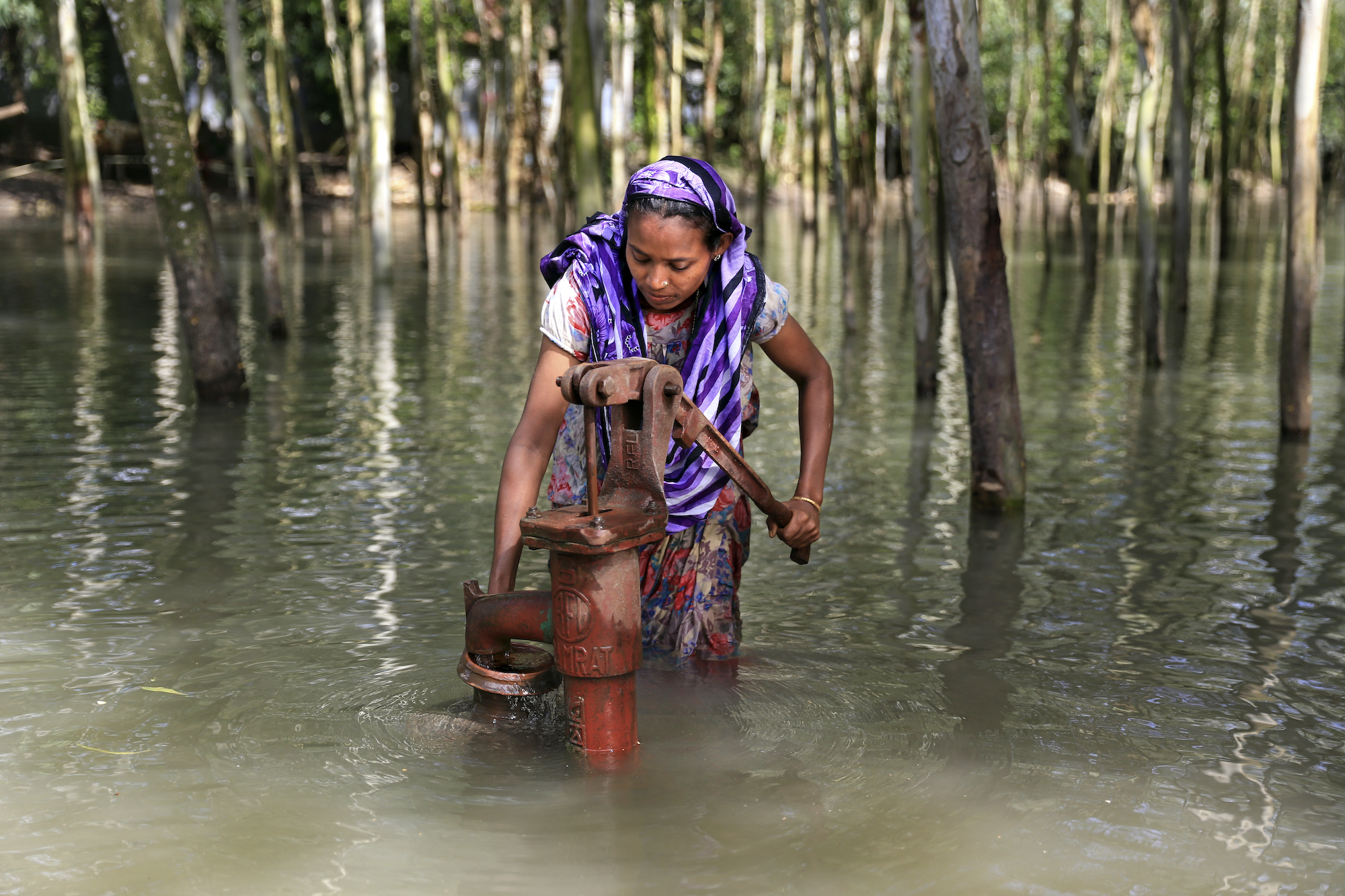How climate change affects waterborne diseases
Waterborne diseases like cholera and typhoid are still a leading cause of human morbidity and mortality worldwide. As climate change increasingly impacts global temperatures and weather events, the risk of these infectious diseases will only worsen. But there are actions we can take to reduce these risks.

Salma collects water from a tubewale to reduce outbreaks of waterborne diseases like cholera, typhoid and diarrhoea in Jamalpur, Bangladesh.

- Waterborne diseases cause 3.5 million deaths annually.
- High temperatures, heavy rain and drought increase the risk of waterborne diseases, such as cholera, typhoid and E. coli.
- Actions to mitigate and adapt to climate change, such as transitioning to renewable energy and improving disease surveillance, can help reduce the risk of waterborne diseases.
Waterborne diseases are caused by drinking or coming into contact with contaminated water.
This contamination could be caused by pollutants, like agricultural chemicals, or faeces from an infected person or animal.
Waterborne diseases, such as cholera, typhoid and E. coli infections, are a major public health issue causing 3.5 million deaths annually. And climate change is increasing the risk.
The climate variables that most influence waterborne illness include:
- extreme weather events (like storms, droughts, precipitation, floods and wildfires)
- increase in air temperature
- increase in water temperature
Cholera outbreaks are closely related to environmental conditions. Cholera is an acute diarrhoeal infection caused by ingestion of food or water contaminated with the bacterium Vibrio cholerae.
Temperature and precipitation can be influential in cholera outbreaks. High temperature can accelerate the growth and proliferation of pathogens in their habitats (like raw food or water). Hotter temperatures can also increase the risk of droughts which can lead to poor sanitation and cholera outbreaks. For example, prolonged and extreme drought in Kenya triggered a cholera outbreak in 2022. More than 7,800 cholera cases and 122 deaths were reported by March 2023.
Rainfall also has a direct influence on the transmission of cholera. High rainfall can increase the risk of wastewater contaminating either raw or treated water (person-to-environment transmission). While low rainfall can increase the concentration of pathogens in water (environment-to-person transmission).
Extreme weather events can also result in the ideal conditions for these infectious diseases to spread. In 2022, Malawi was hit by two tropical storms, Ana and Gombe, during a heavy rainy season. Homes were destroyed and nearly 200,000 people were displaced. This combination of events sparked a cholera outbreak. The disease, which is usually endemic in Malawi, continued to spread through the dry season. By February 2023, 36,943 cases and 1,210 deaths had been reported, marking the biggest outbreak in the country’s history.
Cholera isn’t the only waterborne disease impacted by high temperature, heavy rain and drought. For example, one study in Israel found that temperature increases the incidence of E. coli bloodstream infections. And in Fiji, cases of typhoid are more likely to occur in areas that have experienced flooding of a stream or river.
Climate change is increasing the risk of waterborne diseases. The sooner we act to mitigate the impacts of climate change – by transitioning from using fossil fuels to clean, renewable energy – the better off we’ll be in the future.
But mitigation alone will not be enough. There are other actions we must take to adapt to the risks:
- provide universal access to care and disease management
- improve disease surveillance
- develop and invest in early warning systems to monitor changes in climatic conditions
- upgrade water catchment, storage, treatment and distribution systems
- protect critical infrastructure from floods, storms and sea level rise
- limit water overuse
- use household water purification systems
This article was first published on 12 May 2022.
We’re funding vital research into the impact climate change has on human health around the world, at national, regional and global levels. Explore our current funding call:
Advancing climate mitigation solutions with health co-benefits in low- and middle-income countries
Waterborne diseases like cholera and typhoid are still a leading cause of human morbidity and mortality worldwide. As climate change increasingly impacts global temperatures and weather events, the risk of these infectious diseases will only worsen. But there are actions we can take to reduce these risks.